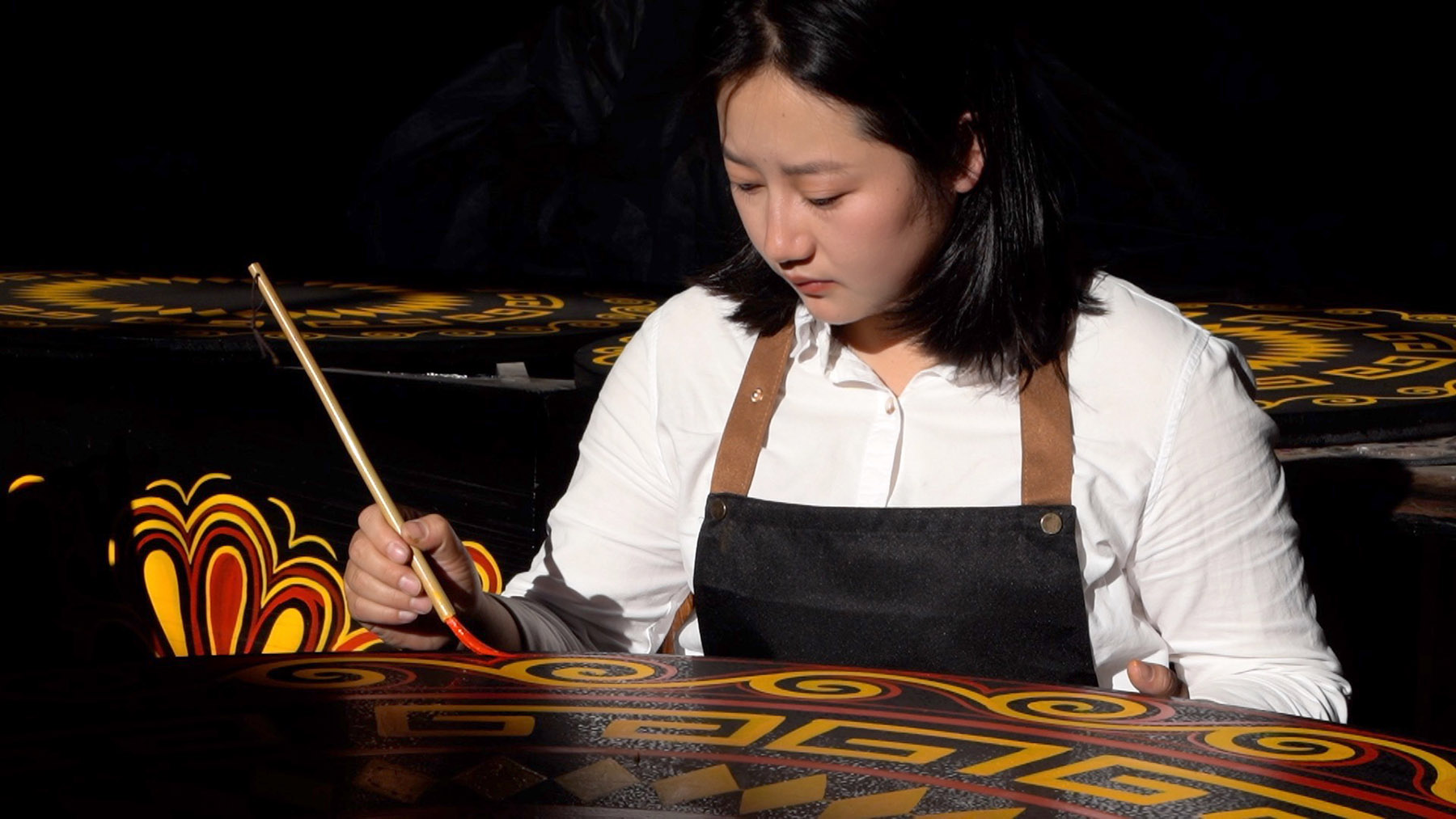
With a paintbrush in hand, Qumu Shiwu patiently draws unique patterns on a piece of lacquerware, freehand yet with unerring precision.
This captivating scene, featured in short videos documenting the daily work of the 29-year-old, has drawn the interest of millions to the ancient art of Yi lacquerware.
Over the years, the 300 videos on her social media accounts have garnered more than 200 million views, turning the traditional art form into an internet sensation.
Qumu was born into an ethnic Yi family in Zhaojue county, Liangshan Yi autonomous prefecture, Sichuan province. The family has passed down the Yi lacquerware craftsmanship for 14 generations.
READ MORE: A many layered affair
With a history stretching back 1,700 years, the craft uses raw lacquer and natural mineral pigments to create vibrant, symbolic designs on wooden cores.
"As a child, I was fascinated by this traditional craft as I watched my grandpa paint beautiful patterns with red, yellow and black by the firepit," Qumu said.
Red, yellow and black, the three most important colors for the Yi people, symbolize their reverence for earth, fire and the sun, respectively.
Qumu's father used to work as a painter at a lacquerware factory in Zhaojue. After the factory closed down, he opened his own workshop.
Despite a tradition that only passes on the craftsmanship to men, Qumu chose to dedicate her life to preserving and promoting the craft.
"Although my grandfather initially objected, my father supported me, saying, 'Just go for it as long as you love it,'" Qumu recalled. She then became the first female inheritor of the craft.
Yi lacquerware-making involves 47 processes, including several key stages — from logging the wood and shaping wooden cores to applying the base coat and painting patterns. The biggest challenge for Qumu, however, was overcoming an allergic reaction to raw lacquer, which often causes severe skin irritation.
"My skin swelled, blistered and festered, leaving me unable to sleep all night," she said. "My father told me to carry on, assuring me that once I got through it, my body would build immunity."
In 2017, Qumu finally completed her first independent work.
The most eye-catching part of her short videos is the lacquer decoration process. Artisans need to draw various patterns directly on the material, usually without any draft when making small and medium-sized lacquerware.
"We Yi people believe that all things have a spirit, so we paint the natural elements we see onto the lacquerware," Qumu said.
While Qumu was picking up the traditional techniques, her father's lacquerware workshop, which employed over 20 artisans, was on the verge of closure.
"Traditional lacquerware struggled to find a market as it became disconnected from modern life and few people knew about it," she said.
To find a way out, Qumu turned to social media. In 2017, she posted her first short video, which soon received over 1,000 likes and thousands of views.
She now has over 500,000 followers across short video platforms such as Douyin, Kuaishou and Xiaohongshu. Her most popular video has garnered more than 500,000 likes and tens of millions of views.
"The power of the internet is incredible!" Qumu said. "In the past, only locals bought Yi lacquerware. Now we have customers across the country and even overseas, including in Japan and Southeast Asia."
Another initiative Qumu has taken is to integrate Yi lacquerware — once used mainly for ceremonial occasions — into contemporary lifestyles, expanding its customer base, particularly among young people.
ALSO READ: Journey of lacquerware through dynasties
Drawing on her academic background in design, she has developed over 30 types of practical products, such as phone cases, tableware, and tea sets. "I've kept the soul of Yi lacquerware — the unique patterns and three-color aesthetics — but expressed them in modern forms," Qumu said.
These efforts have led to a surge in the revenue of her father's workshop, from about 400,000 yuan ($56,000) annually to more than 3 million yuan. As an intangible cultural heritage inheritor, Qumu is committed to engaging young people in the craft. She has partnered with eight universities to set up workshops, nurturing 37 new-generation artisans.
Her father's workshop currently has over 20 employees born after 1980, half of whom are post-2000.
Qumu is also studying techniques from other traditional lacquerware styles to fuel her innovations, while actively pursuing cross-sector collaborations with other intangible cultural heritage projects, designer brands and scenic spots.
"My next target is to take Yi lacquerware to a broader global stage, allowing the world to learn about Liangshan through the craft," she added.
Contact the writers at pengchao@chinadaily.com.cn


